During daily rounds to check on the health of the residents, Animal Care staff notice that the eldest male goat, Geronimo, appears to have a cracked hoof. Staff veterinarian Dr. Maria Hallock is concerned he may have cracked it close to the blood supply. This leaves him open to the possibility of an infection, which is more likely with spring weather – melting snow and lots of mud.
The wildlife residents at Yukon Wildlife Preserve are not trained. This keeps them as wild as possible, but it does make medical procedures an interesting challenge. Most medical procedures are performed under general anesthesia to minimize stress to the animal as well as to ensure safety of the staff handling the animal. While some animals are cooperative enough to receive their sedative medication via hand injection, most of them require a distance delivery of the drug via various equipment such as jabpole, blowpipe and dartgun.
Randy, Director of Operations, uses a dartgun for distance delivery of sedative drugs to the young male, or billy, goat.
The team gathers… but the mountain goats are not interested in participating. So, the team gathers the following day, to try again. Geronimo is successfully sedated – but here’s the thing about mountain goat personalities – their tolerance to their peers showing vulnerability is low to none. If a rival shows weakness, the other goats will come in to finish him off with his very sharp horns. Given the situation and the close proximity of a second male, or billy, there is a great safety concern to Geronimo during his recovery period. Therefore, Dr. Maria decides to use this opportunity to sedate and trim the younger billy’s hooves, as well as clean up any winter hoof overgrowth.
Hooves and horns are composed of keratin – the same protein as hair and nails. Just like in the wild, Rocky Mountain Goats at Yukon Wildlife Preserve will wear down their hooves by walking on the rocks in preferred cliff habitat. During winter, with snow covering the cliffs, it is more challenging for the goats to wear down their own hooves. Even so, not all the resident goats will require hoof trims, but some individuals do – things like older age, genetics and nutrition all contribute.
Hooves and nails are both composed of the same protein, keratin. Trimming hooves is not unlike humans trimming their fingernails, or taking their pet dog to the vet for a nail trim.
Dr. Maria and Randy begin trimming hooves, Julie monitors Geronimo’s health while under general anesthetic as Ensio records times and values such as heart rate.
Once the goats are sedated, we cover their eyes so they won’t be stimulated by light, and team members start taking and recording vital signs – heart rate, breathing rate, and temperature, to name a few. Since Geronimo is an older goat, he is also put on intranasal oxygen throughout the procedure. Dr. Maria and Randy get busy trimming the hooves, to make the procedure as quick and safe as possible, so we can wake the goats up, as soon as we can.
The eldest billy, Geronimo, receives intranasal oxygen. During the procedure to trim his cracked hoof, his eyes are covered to avoid stimulating him. Here, Julie monitors vital signs such as heart rate, breathing rate and temperature as Dr. Maria works to quickly trim hooves.
We are happy to report that although Geronimo had indeed cracked his hoof, the crack did not communicate with the blood supply, so he’s at less risk of an infection from his hoof. Essentially…. he had a broken fingernail…
Geronimo’s hoof after being trimmed. The right toe was trimmed bluntly due to the crack in the hoof. The left toe is the “normal” shape after trimming
Both billy goats are woken up from sedation at the same time – we don’t want to risk any fighting of a rival! In order to wake the goats up, they are given injections of sedative reversals.
Julie injects sedative reversal intramuscularly.
The time is noted and recorded so we know when to expect Geronimo to waken.
Veterinary medical costs quickly add up. Even this simple, fast procedure cost $60 per goat for anesthetic drugs, antibiotics and pain control. Hidden costs include expertise, labour and supplies such as syringe and needles.
We also administer an injection of antibiotics which will last for 3 days, to mitigate any potential infection arising from either hoof injury or the drug injection site. Within minutes of waking up, both goats are heading their own way, to get back to the normal routine of being Rocky Mountain Goats.
Photo and Video Credit: L. Caskenette
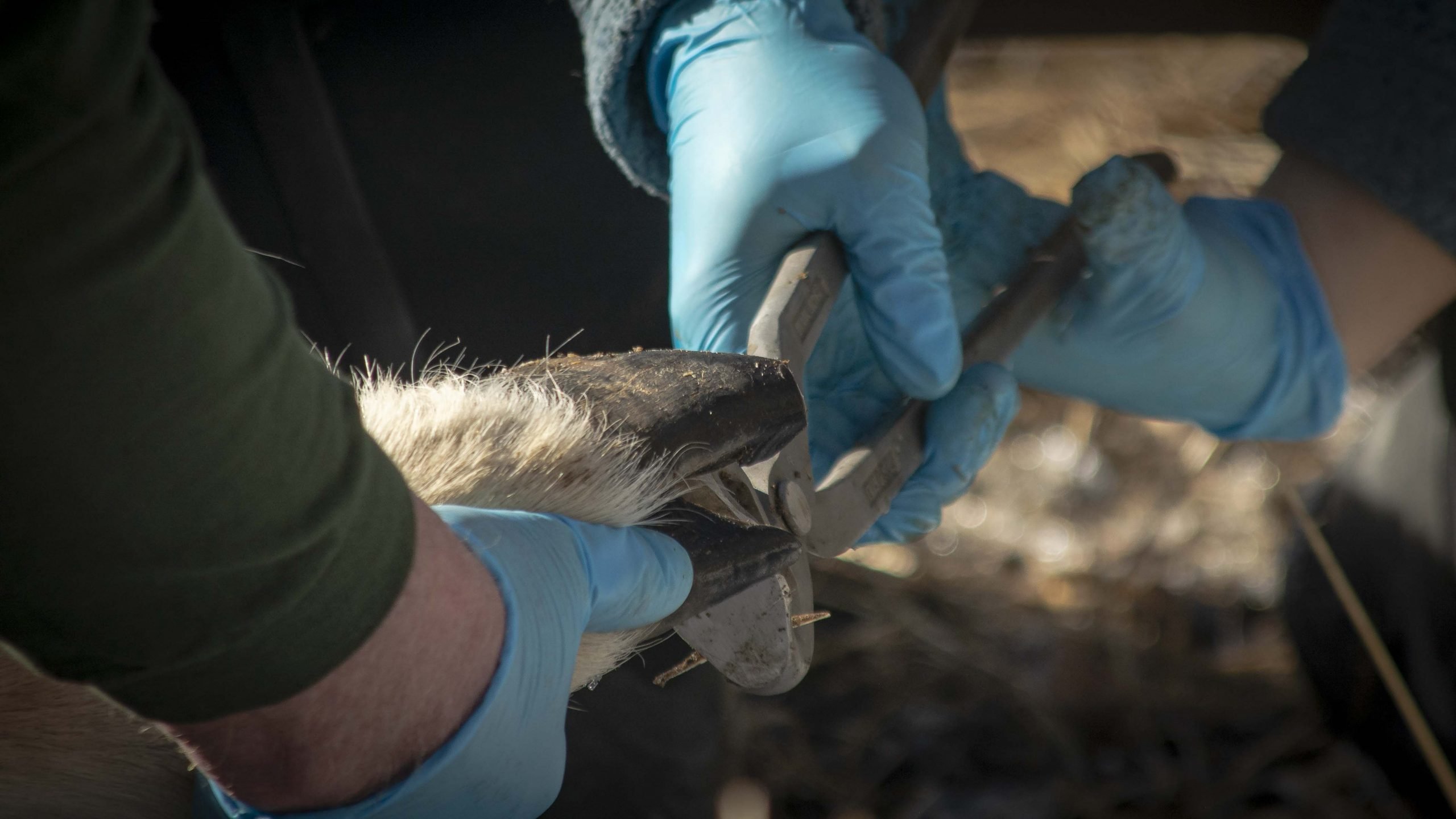
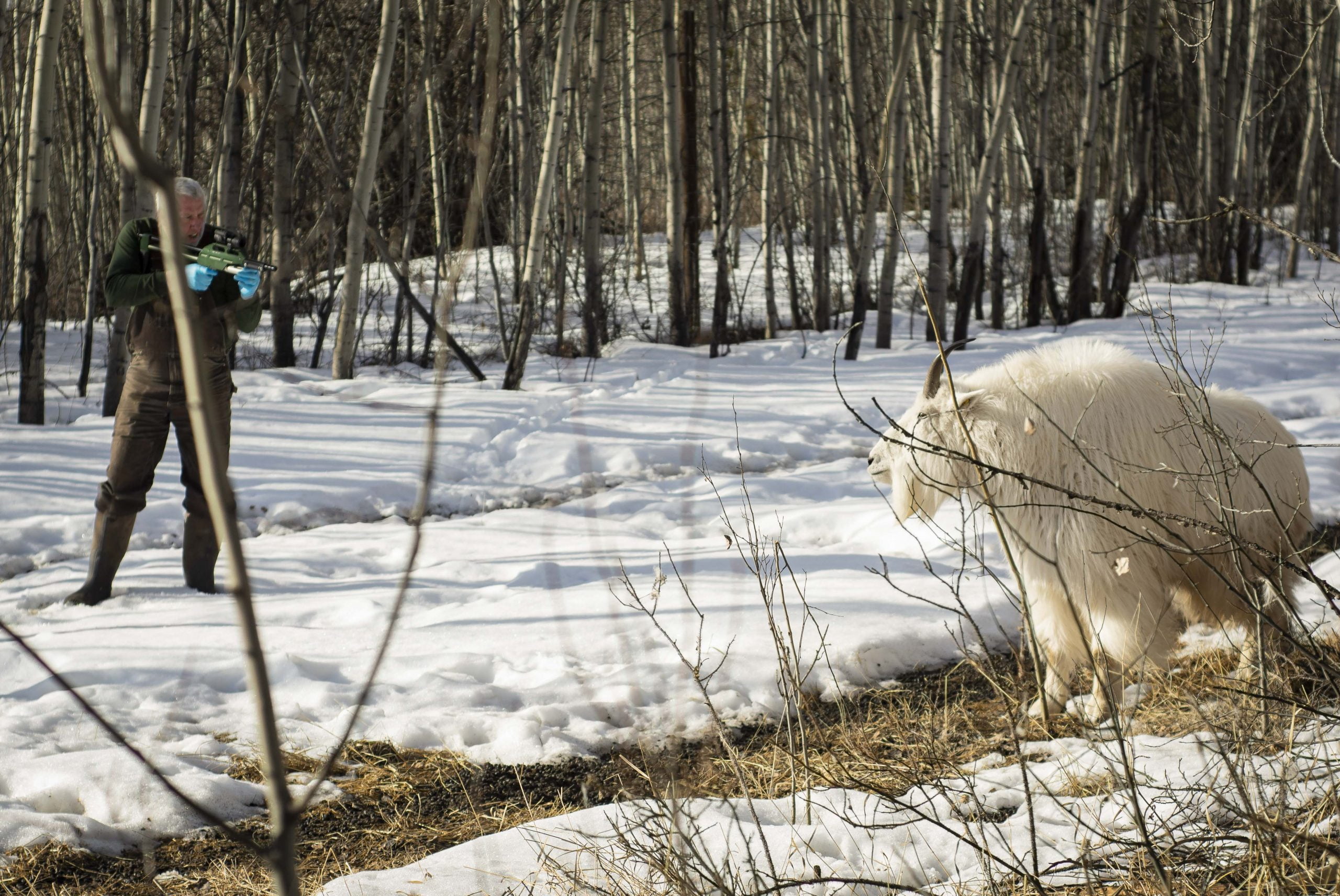




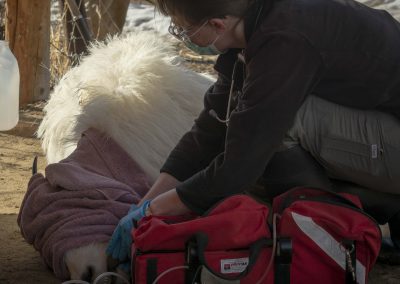
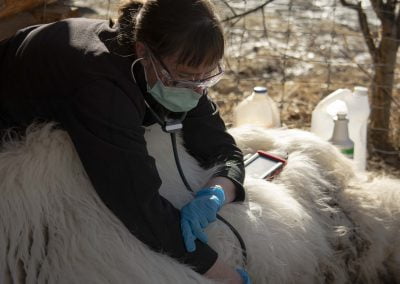
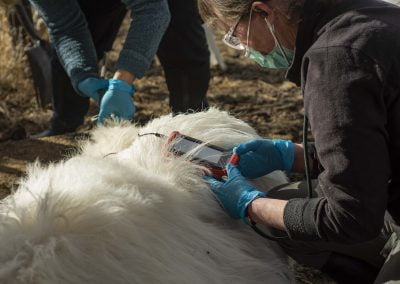
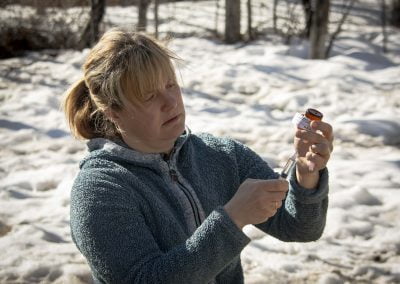
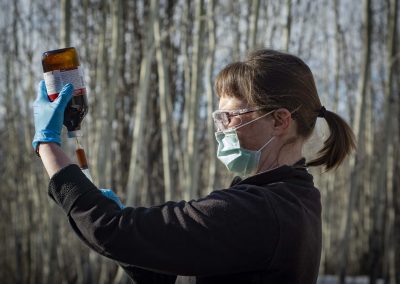
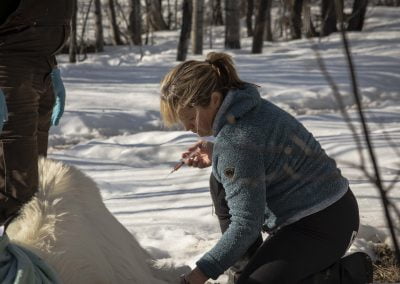
Who knew, to keep mountain goats in good climbing,
the effort and expertise to keep them healthy.
Excellent photos and very, very interesting and informative
information. Engaging
A lot to learn, Thank you for the easy to understand information.
Thank you Johnny, we’re glad you enjoyed this blog.